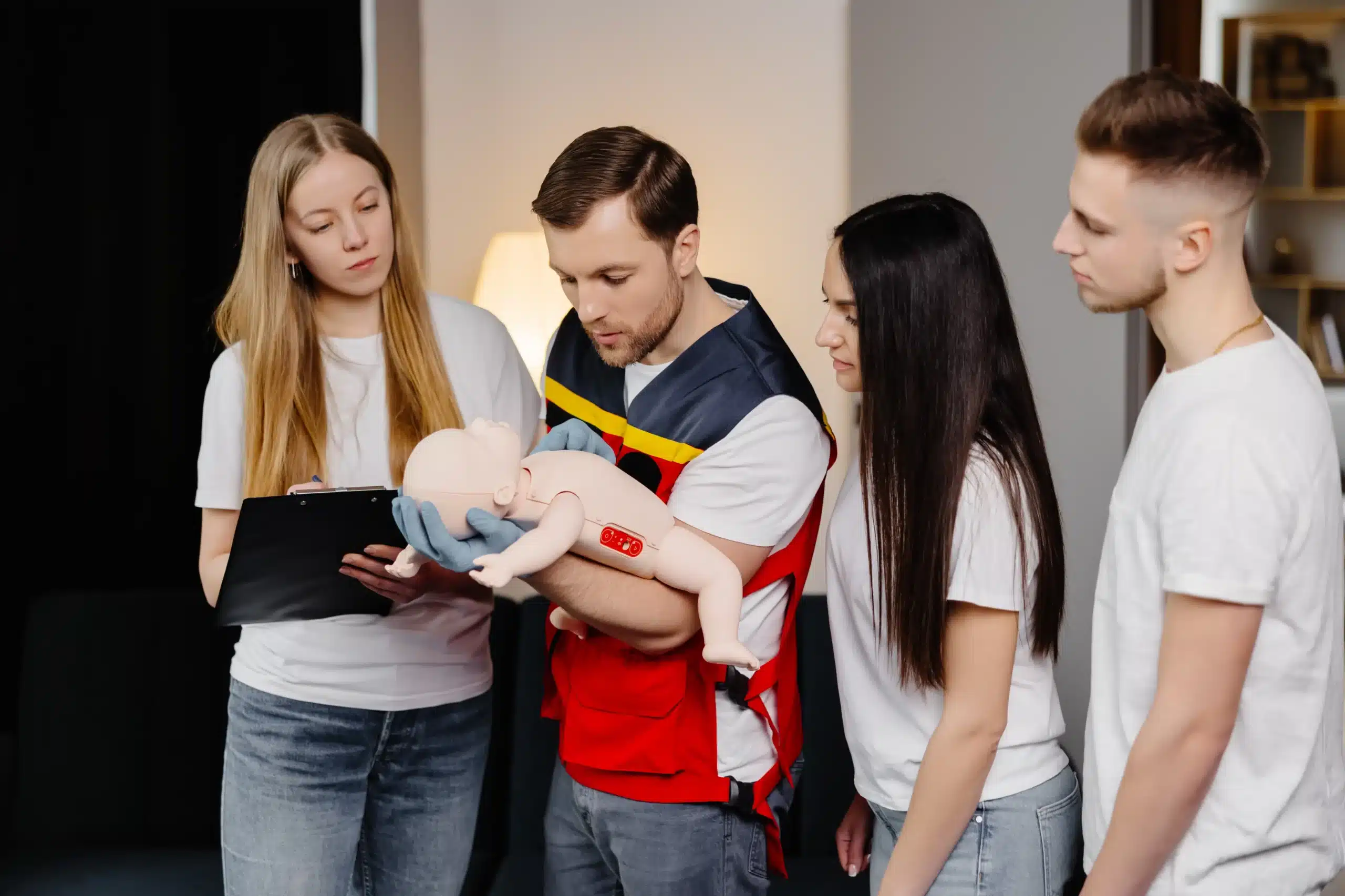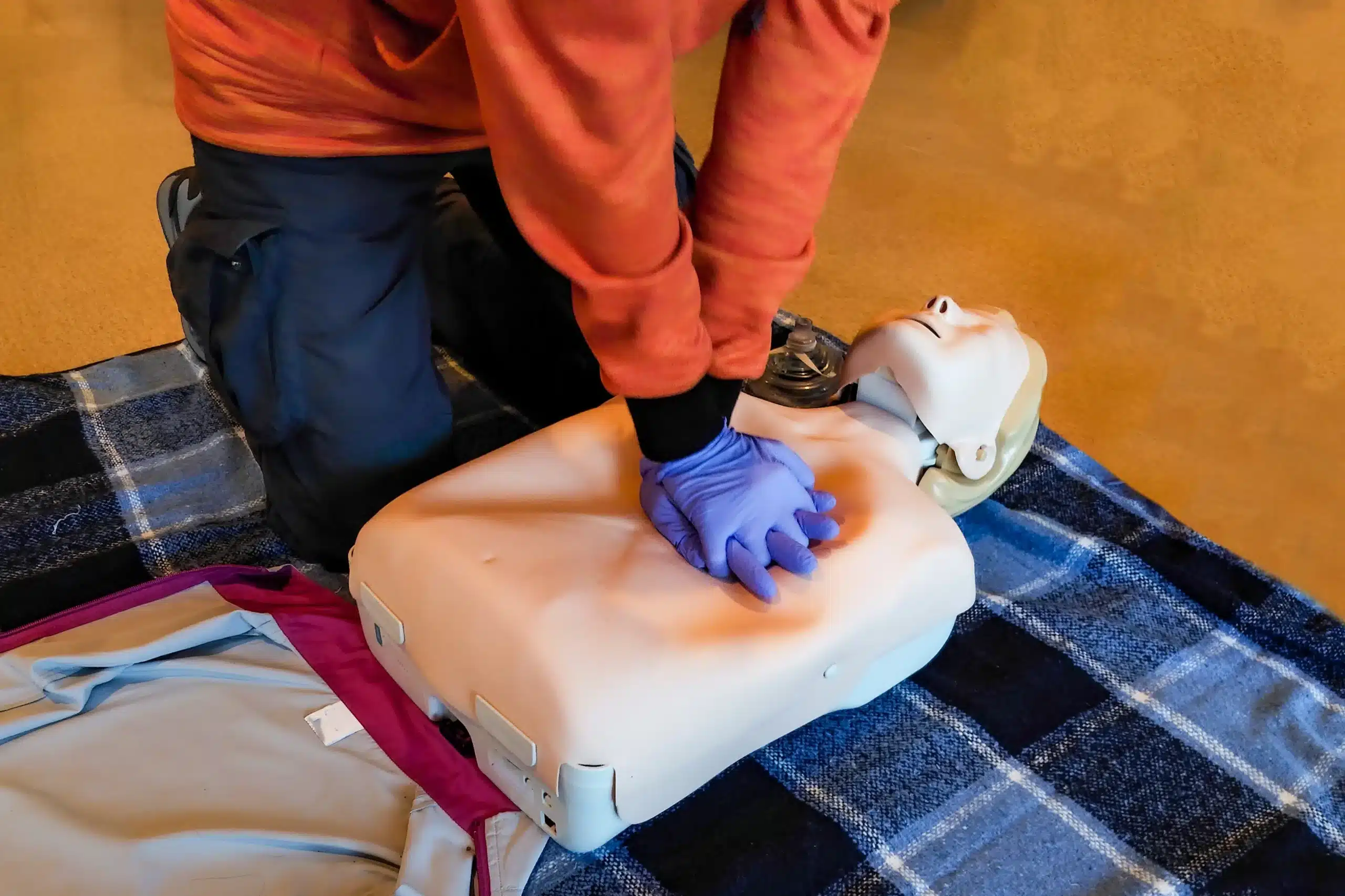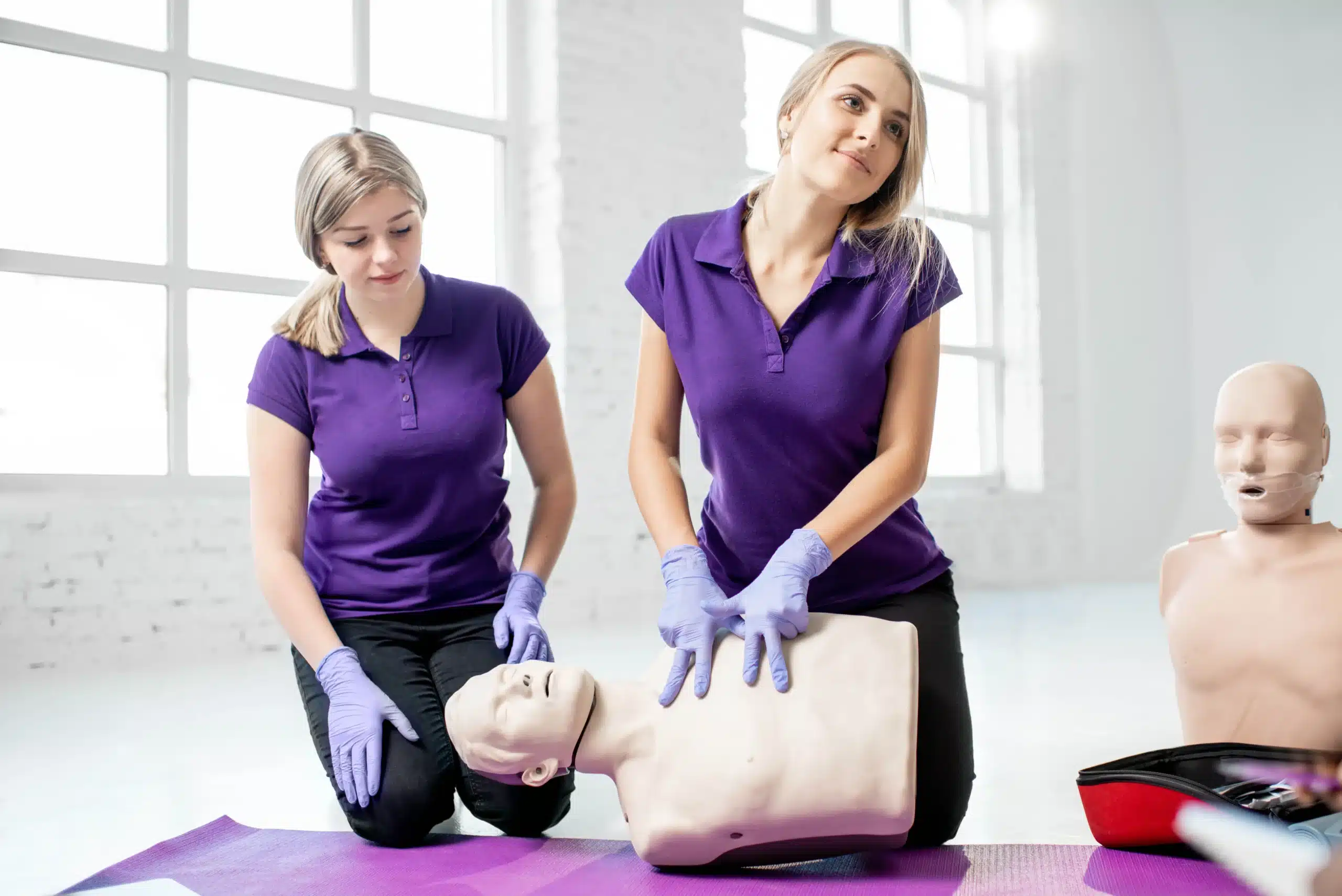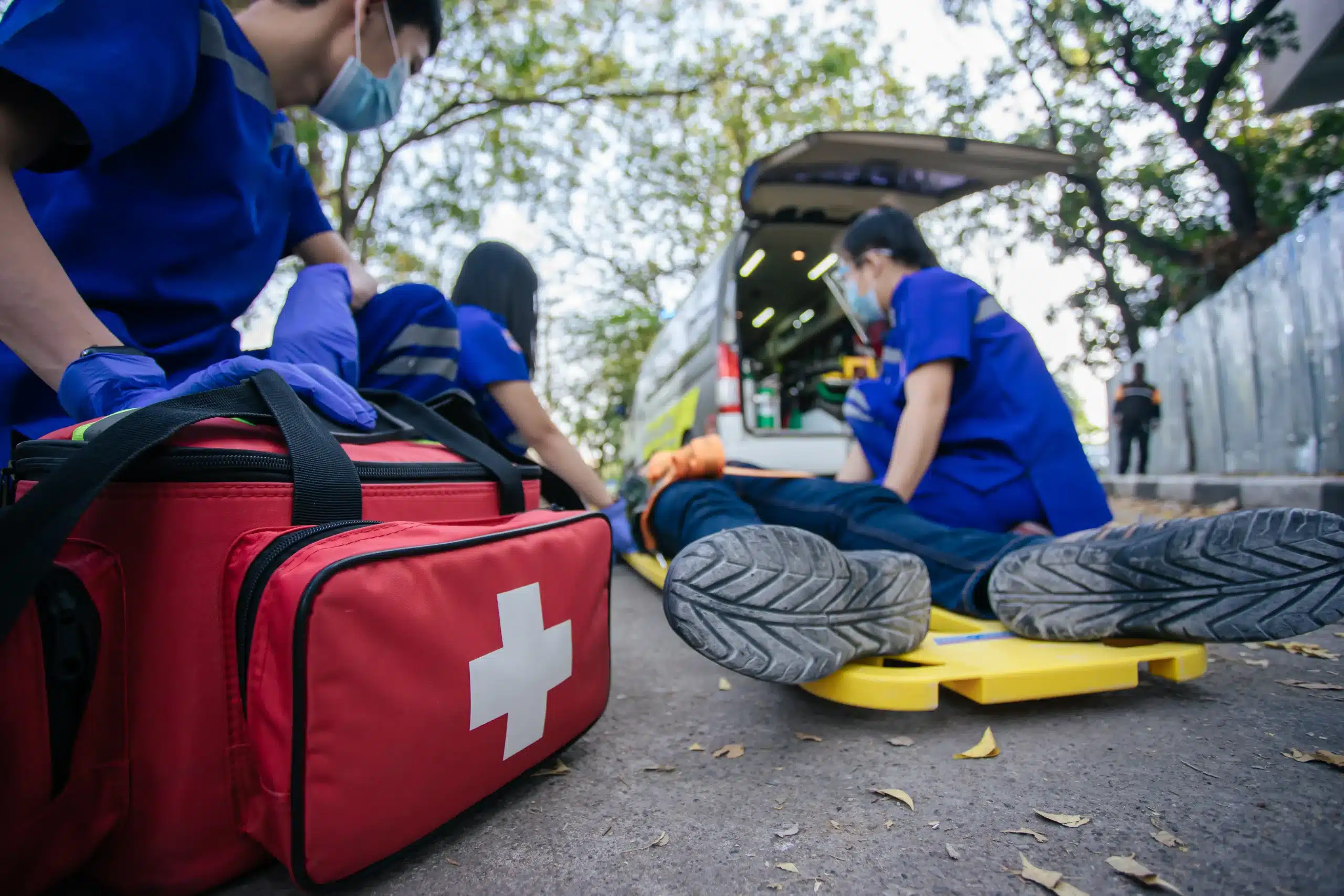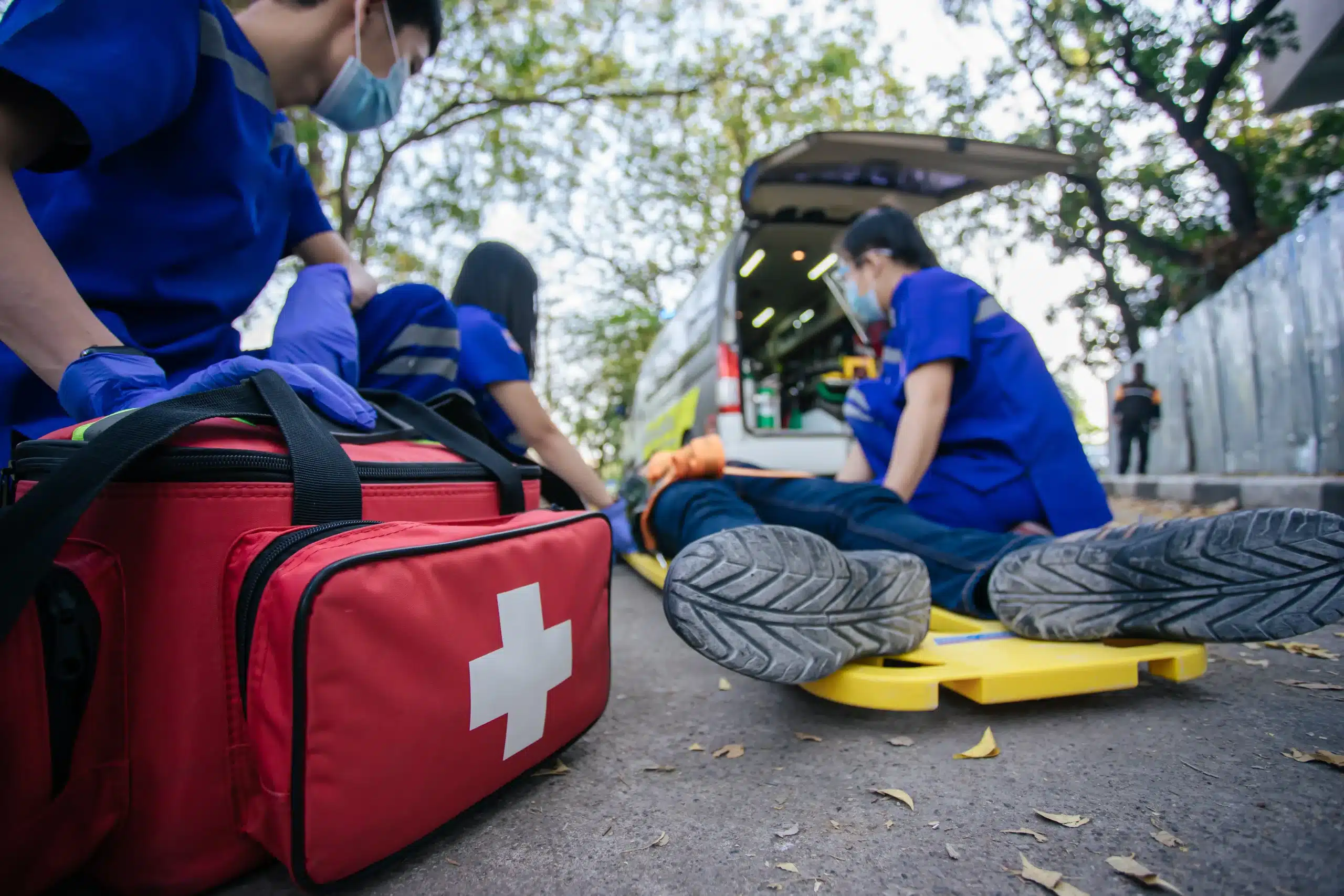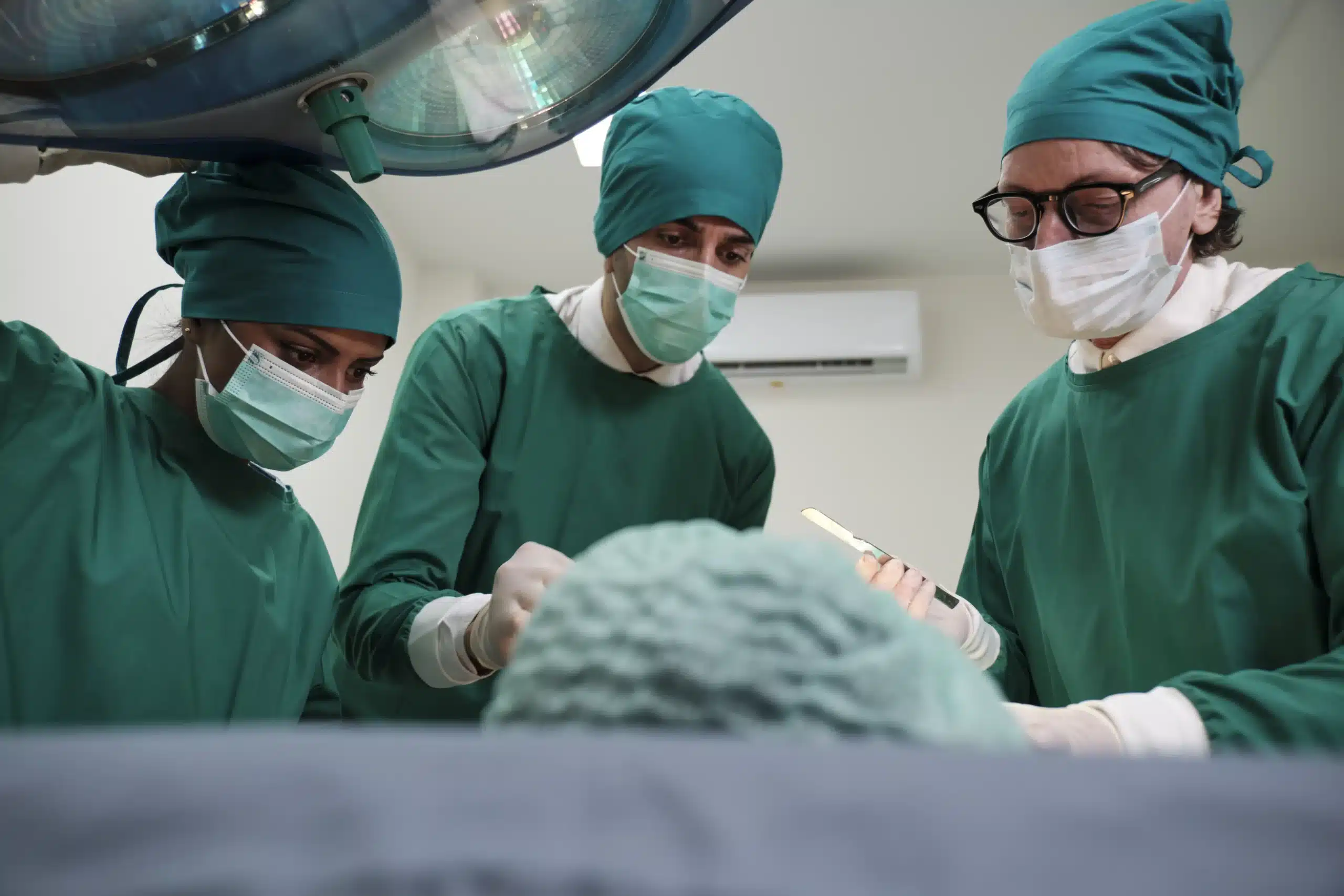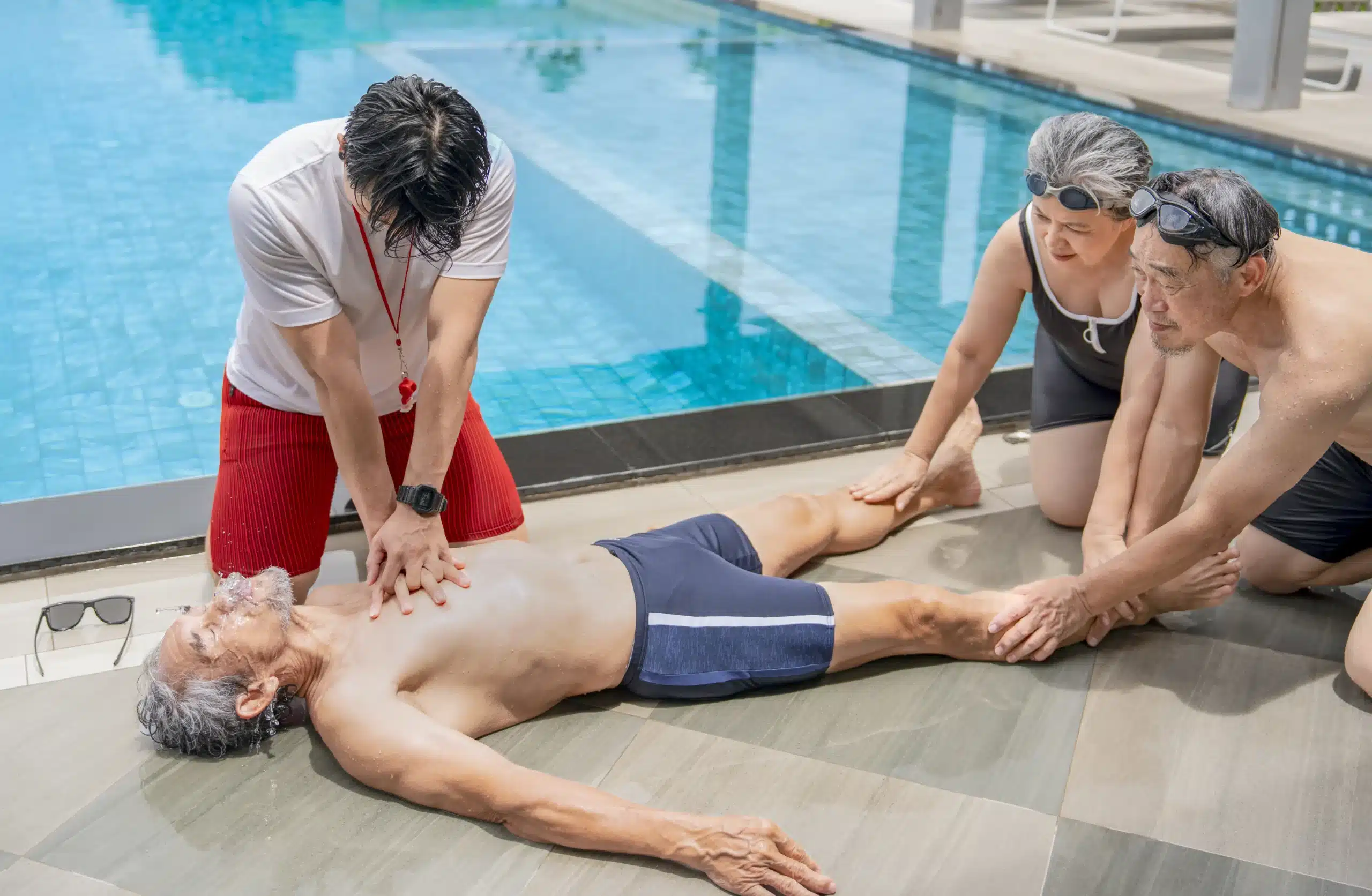Empowering yourself with life-saving skills starts with first-aid training. Whether you’re a parent, a caregiver, a healthcare professional, or simply someone who wants to be prepared for anything, knowing how to respond in a medical emergency is invaluable. This guide will help you navigate the world of first aid, from understanding the different types of courses available to finding “first-aid classes near me” that fit your schedule and budget. We’ll also explore the benefits of first-aid certification, the importance of ongoing practice, and how Santa Clara CPR Classes can help you become a confident and skilled first responder.
Key Takeaways
- Be prepared for anything: First-aid training equips you with the skills to handle medical emergencies, from minor cuts to life-threatening situations. Find a course that suits your needs, whether it’s basic first aid, CPR/AED training, or specialized instruction.
- Find the right fit: Consider factors like course content, format (online, in-person, or blended), instructor qualifications, and certification requirements when selecting a first-aid class. Reading reviews and comparing prices can help you make an informed decision.
- Stay sharp: Maintaining your first-aid skills is crucial. Regularly review techniques, practice with friends or family, and recertify when necessary to ensure you’re always ready to respond effectively in an emergency.
What are First-Aid Classes?
First-aid classes equip you with the skills to handle medical emergencies. Whether it’s a minor scrape or a life-threatening situation, knowing what to do can make all the difference. These classes offer a blend of theoretical knowledge and practical training, empowering you to respond effectively and confidently. Let’s explore the different types of first-aid training available.
Basic First Aid
Basic first-aid courses cover the essentials for handling common injuries. You’ll learn how to clean and bandage cuts, treat minor burns, and manage sprains. These classes also teach you how to assess a situation and determine when professional medical help is necessary. Understanding the basics can help you stay calm and take charge when someone needs immediate care.
CPR and AED Training
CPR (Cardiopulmonary Resuscitation) and AED (Automated External Defibrillator) training are vital components of many first-aid classes. You’ll learn how to perform CPR on adults, children, and infants—a skill that can save lives in the event of cardiac arrest. AED training teaches you how to use these devices, which can restore a normal heart rhythm. Our CPR classes at Santa Clara CPR Classes cover these essential, life-saving techniques.
Specialized First-Aid Training
Beyond basic first aid, there are specialized courses designed for specific groups and situations. Pediatric first-aid classes focus on the unique needs of infants and children, equipping parents, caregivers, and educators with age-appropriate techniques. Workplace first-aid training may cover emergency preparedness and response, including handling workplace-specific hazards. These specialized courses provide tailored instruction to meet the demands of various environments and populations.
Find First-Aid Classes Near You
Finding the right first-aid class shouldn’t feel like a scavenger hunt. Whether you’re looking for a basic course or specialized training, several resources can help you find the perfect fit.
Online Search Tools
The internet is a powerful tool for finding first-aid classes nearby. The American Red Cross website, for example, offers a class locator tool where you can enter your zip code and find courses in your area. They offer a variety of options, including Adult and Pediatric First Aid/CPR/AED training. CPR AED Course offers helpful advice on factors to consider when choosing a course, such as the syllabus, instructor qualifications, and certification options. Researching these elements will help you choose a program that meets your needs.
Local Community Resources
Don’t overlook local resources. Community centers, local hospitals, and health organizations often offer first-aid and CPR training tailored to their community’s specific needs. Check with organizations like Street Friends or your local fire department for available classes. These are often more affordable and provide a great way to connect with your community.
Professional Organizations
Professional organizations like the American Heart Association (AHA) offer a wide range of certified first-aid and CPR courses. These courses are typically high-quality and recognized across various industries. Santa Clara CPR Classes offers several AHA-certified courses, including Basic Life Support (BLS), Advanced Cardiovascular Life Support (ACLS), and Pediatric Advanced Life Support (PALS). You can also find other reputable training providers like Safety Training Seminars that offer AHA-certified courses in your area. These organizations ensure your training is up-to-date and meets industry standards.
Costs of First-Aid Training
Knowing the cost of first-aid training is an important part of choosing the right class. Several factors influence pricing, including the type of course, location, and training provider. Let’s break down the typical costs, explore ways to save money, and see if your employer might cover the expense.
Typical Price Ranges
Combined CPR and first-aid certification courses generally range from $75 to $200, often covering certification fees. Basic CPR certification alone might cost between $50 and $150. More advanced certifications, like ACLS or those including comprehensive first aid, could cost $200 or more. Group CPR classes can offer a per-person cost of around $35 to $45, depending on the provider and location. Remember, these are just averages, and prices can vary. It’s always a good idea to check with specific training providers in your area, like Santa Clara CPR Classes, for their exact pricing.
Discounts and Financial Assistance
Looking to save on training? Explore potential discounts or financial assistance programs. Some providers offer reduced rates for group training. Community centers and local organizations are also excellent resources for finding cost-effective courses. While some online CPR courses may be free, they often don’t provide OSHA-compliant certification, which is essential for many workplace settings. Always confirm the certification provided before signing up for a free online course. For those seeking affordable options, our Low Price Guarantee ensures competitive pricing on all our courses.
Insurance Coverage and Employer Reimbursement
In some cases, your health insurance plan might partially or fully cover the cost of first-aid training. It’s worth checking with your insurance provider to see if this is an option for you. Additionally, many employers recognize the value of first-aid training and offer reimbursement programs for their employees. Reach out to your company’s human resources department to inquire about potential reimbursement options. This can be a great way to gain valuable skills without the full out-of-pocket expense.
First-Aid Class Length and Format
In-Person vs. Online Training
Choosing between in-person and online first-aid training depends on your learning style and certification requirements. Online first-aid courses offer flexibility and convenience, allowing you to learn at your own pace. They provide essential knowledge and skills for responding to emergencies, covering topics like wound care and recognizing medical conditions. However, for certifications recognized by organizations like the American Heart Association, in-person training is often required. Santa Clara CPR Classes emphasizes the importance of hands-on skills practice and assessment, which are typically part of in-person sessions. This hands-on element is crucial for building confidence and competence in real-life emergency situations.
Class Lengths and Time Commitments
First-aid class lengths vary depending on the content and certification level. Basic first-aid courses can range from a few hours to a full day. More comprehensive training, including CPR and AED certification, may require a longer commitment. Some organizations, like the City of Everett, offer free introductory courses focusing on essential emergency response techniques. For professional-level certifications, such as American Heart Association BLS, expect a more extensive course. Consider your schedule and choose a class length that works for you. It’s helpful to check with the training provider for specific course durations and schedules.
Blended Learning
Blended learning combines online learning with in-person instruction. This format lets you complete the knowledge portion online at your own pace, then attend an in-person skills session for hands-on practice and evaluation. This approach offers flexibility while ensuring you receive practical training. Many organizations, including Santa Clara CPR Classes, offer blended learning for various certifications, including CPR and first aid. This can be an excellent option for those balancing work, family, and other commitments. Blended learning allows you to absorb information independently and then apply it in a guided, interactive setting.
Choose the Right First-Aid Class
Finding the perfect first-aid class involves a little research to ensure it meets your specific needs. Here’s a breakdown of how to choose the right course for you:
Assess Your Needs
Before you start searching for “first-aid classes near me,” take a moment to consider what you want from a course. Are you looking for basic first-aid certification for personal knowledge? Do you need it for a specific job or to volunteer with a particular organization? Some workplaces, for example, may require training that follows American Heart Association (AHA) guidelines. Thinking about the course syllabus, the instructor’s experience, and the type of certification you’ll receive will help you narrow down your options. Consider exploring self-paced first-aid classes for added convenience.
Read Reviews and Testimonials
Once you’ve found a few potential classes, see what other students have to say. Online reviews and testimonials offer valuable insights into the quality of instruction, the overall learning experience, and whether the class met participants’ expectations. Reading these reviews can give you a better sense of what to expect and help you make a more informed decision. Investing in first-aid and CPR training is a smart move for both personal and community preparedness, so you want to choose a reputable provider like Santa Clara CPR Classes.
Evaluate Instructor Qualifications
A qualified instructor is key to a good learning experience. Look for instructors with certifications from recognized organizations like the American Heart Association or the American Red Cross. Check if the instructor has significant experience teaching first aid and maintains up-to-date knowledge and skills. Also, confirm that the course covers essential skills you need, such as adult, child, and infant CPR, AED training, and how to respond to various first-aid emergencies. A comprehensive course led by a qualified instructor will give you the confidence to handle real-life situations. Learn more about CPR class costs and what training should include from resources like Health Education Pro.
What to Expect in a First-Aid Class
So, you’ve signed up for a first-aid class—congratulations! Knowing what to expect can help you feel prepared and confident. Here’s a glimpse into a typical first-aid course:
Common Topics
First-aid classes cover essential topics to equip you for various emergency situations. You’ll learn how to recognize and respond to medical emergencies, injuries, and environmental hazards. Expect to explore topics like wound care, bleeding control, burns, fractures, sprains, choking, and allergic reactions. Many courses also include pediatric first aid, CPR, and basic emergency preparedness. This is especially important for anyone working with children, creating a safer environment.
Hands-On Practice
Hands-on practice is a cornerstone of effective first-aid training. You’ll apply your new knowledge in simulated scenarios, practicing essential techniques like bandaging wounds, splinting fractures, and performing CPR. This practical experience builds your confidence and muscle memory, ensuring you can react effectively under pressure. For example, the American Heart Association’s BLS course at Santa Clara CPR Classes provides hands-on training in essential techniques and best practices for healthcare settings.
Assessment and Certification
Most first-aid courses include an assessment to evaluate your understanding and skills. This may involve a written exam, practical demonstrations, or both. Successfully completing the course earns you an official certification card, typically valid for two years. This certification demonstrates your first-aid competence and may be required for certain jobs or volunteer positions. The cost of CPR and first-aid training, which often includes certification fees, can vary but typically falls between $75 and $200, according to this cost of CPR classes article.
Benefits of First-Aid Training
Knowing what to do in a medical emergency can make all the difference. First-aid training gives you the confidence and skills to act quickly when it matters most. Whether a minor injury or a life-threatening situation, being prepared can significantly impact the outcome. Let’s explore some key benefits of becoming first-aid certified.
Personal Preparedness
First-aid training empowers you to handle emergencies at home, work, or in the community. From everyday mishaps like cuts and burns to more serious events, you’ll be equipped to provide immediate care for yourself, your loved ones, or even strangers. This preparedness can bring peace of mind, knowing you can respond effectively in various situations. First-aid training equips individuals with the knowledge to respond effectively in emergencies.
Professional Development
A first-aid certification is a valuable asset in many professions. It demonstrates your commitment to safety and your ability to handle critical situations. For those in healthcare, education, childcare, or other fields involving the care of others, first-aid certification is often a requirement or a significant advantage for career advancement. CPR and first-aid certifications can enhance your professional qualifications. It also shows employers you’re proactive and dedicated to creating a safer environment.
Community Impact
First-aid training doesn’t just benefit you personally; it strengthens your community. When more people are trained in first aid, the community becomes better equipped to respond to emergencies. This creates a safer environment for everyone, from children on the playground to seniors in assisted living. First aid and CPR training are crucial skills that empower community members to respond effectively during emergencies. By getting certified, you become a valuable resource and contribute to the well-being of those around you.
Maintain Your First-Aid Skills
Learning first aid is an ongoing process. It’s not enough to take a class and consider yourself prepared. Staying up-to-date on the latest techniques and consistently practicing your skills are crucial for providing effective assistance during emergencies.
Recertification
After completing your first-aid training, you’ll receive a certification card—often valid for two years—from organizations like the American Heart Association. To maintain your certification and ensure your knowledge reflects current practices, recertification is essential. This usually involves taking a refresher course before your current certification expires. Recertification not only keeps your skills sharp but also demonstrates your commitment to providing high-quality care.
Ongoing Practice and Review
Even if your certification isn’t up for renewal, regular practice and review are key to maintaining your first-aid skills. Think of it like any other skill—the more you use it, the more confident and effective you become. Set aside time each month to review essential techniques like CPR, bandaging, and splinting. You can practice with friends or family, or use online resources and videos as refreshers. This ongoing practice will help you react quickly and efficiently in a real emergency. Plus, understanding the cost of CPR classes and incorporating regular practice makes maintaining your skills a manageable part of your overall health and safety plan.
First-Aid Classes at Santa Clara CPR Classes
Santa Clara CPR Classes has been providing CPR and first-aid training since 1989. We’re committed to equipping our community with these lifesaving skills. We proudly serve Santa Clara, Milpitas, and San Jose, California.
Our Courses
We offer a range of American Heart Association (AHA) certified courses, including BLS, ACLS, PALS, and First Aid. These certifications are widely recognized and respected in the healthcare field. We also offer RQI classes for healthcare professionals needing to renew their certifications. Whether you’re a healthcare provider, a student, or simply want to be prepared for emergencies, we have a course for you.
Schedule and Register
With classes held daily and flexible scheduling, we make it easy to fit training into your busy schedule. Visit our website to view our calendar and register for a class. Our online registration is simple and secure.
Why Choose Us?
Santa Clara CPR Classes offers high-quality, affordable training. Our convenient schedules, various AHA-certified courses, and low price guarantee make us a top choice for CPR and first-aid certification. Contact us with any questions.
Related Articles
- Your Guide to First Aid Training in San Jose – Santa Clara CPR Classes
- CPR & First Aid Classes in Santa Clara: Your Guide – Santa Clara CPR Classes
- Pediatric CPR & First Aid Training in San Jose – Santa Clara CPR Classes
- BLS Training Near Me: A Practical Guide – Santa Clara CPR Classes
- CPR Renewal in San Jose: Your Complete Guide – Santa Clara CPR Classes
Frequently Asked Questions
What’s the difference between basic first aid and CPR?
Basic first aid focuses on treating common injuries like cuts, burns, and sprains. CPR, on the other hand, addresses life-threatening situations like cardiac arrest, where someone’s heart has stopped beating. While distinct, they often complement each other in comprehensive first-aid courses.
How do I choose the right first-aid class for me?
Consider your specific needs. Do you need it for your job, personal enrichment, or a volunteer role? Once you know what you’re looking for, research different providers, compare course content, read reviews, and check instructor qualifications. Don’t hesitate to contact the training provider directly if you have questions.
Are online first-aid courses as good as in-person classes?
Online courses offer flexibility, but in-person training provides hands-on practice and is often required for certifications from organizations like the American Heart Association. A blended learning approach, combining online learning with in-person skills sessions, can be a great compromise.
How much does first-aid training cost, and is financial assistance available?
Costs vary depending on the course type, location, and provider, but generally range from $75 to $200 for combined CPR and first aid. Some providers offer discounts for group training, and your employer might cover the cost. It’s always wise to ask about potential discounts or financial aid options.
How can I maintain my first-aid skills after becoming certified?
Regular practice is key. Review your materials periodically, and consider recertifying when your current certification expires. Staying up-to-date on the latest techniques ensures you can confidently and effectively respond to emergencies.
